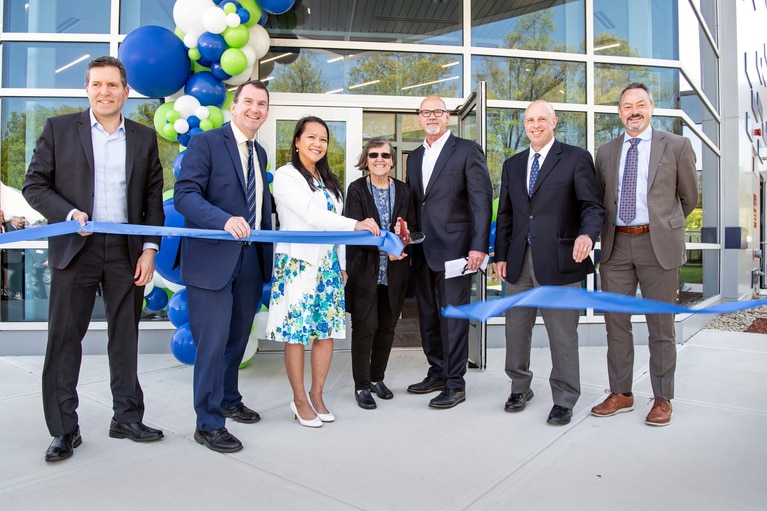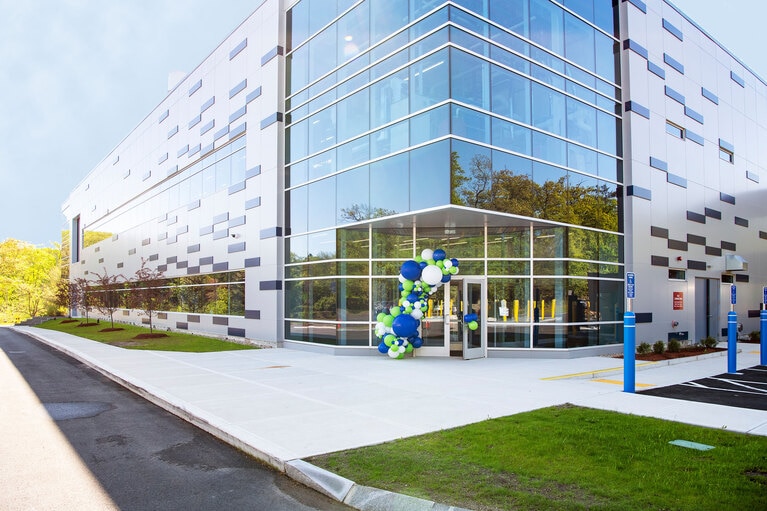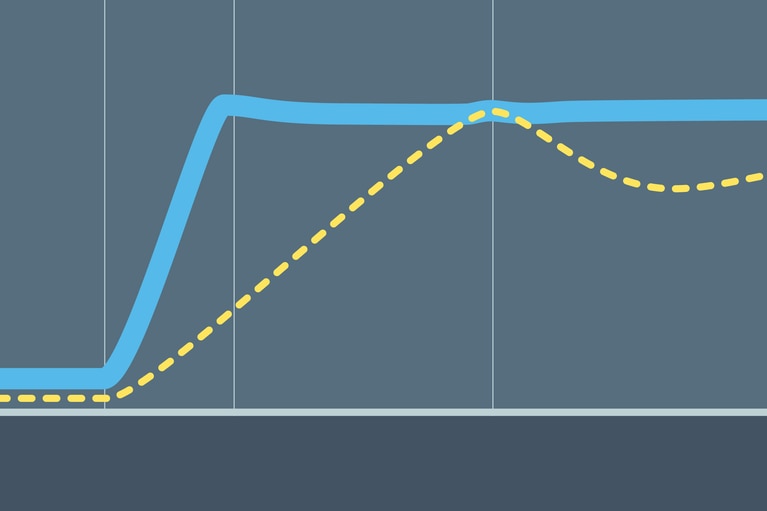
ReVolt – Technical Q&A
ReVolt is cleaning up Hollywood's emission problems today and next will address construction sites, emergency response and events with portable DC power
Vicor’s expanded manufacturing capacity is integral to Vicor’s strategy to support fast-growing markets and stay ahead of customer needs.
Expansion – Vicor Corporation, a leading global high-performance power company focused on developing high-density power modules for over 40 years, recently completed a 95,000 square-foot expansion at its manufacturing facility in Andover, Massachusetts. The facility is the world’s first ChiP (Converter housed in Package) fabrication facility, or “ChiP fab,” which sets the standard for scalable high-volume, cost-effective and reliable power module manufacturing in the United States.
The sizable addition to Vicor’s existing manufacturing capability will produce Vicor’s newer, more advanced power module products, which are in high demand across many growth markets. The ChiP fab enables innovative power solutions that deliver compact and highly efficient modular power units for a wide array of fields, including data center, automotive, aerospace/satellite, robotics and unmanned aerial vehicles, to name few.
“The opening of this first-of-its-kind ChiP fab represents the culmination of years of detailed planning,” says Vicor Vice President of Operations Mike McNamara. “This new capacity is integral to Vicor’s strategy and success in fast-growing markets, and as the demand ramps up for Vicor, this factory will help us keep pace with our customers’ needs.”
World’s first ChiP (Converter housed in Package) fabrication facility, or “ChiP fab” expansion to the current Vicor facility at 400 Federal Street, Andover.
Vicor, which has been a “made in the USA”manufacturer since its founding, hired Gorman Richardson Lewis Architects (GRLA), seeking to bring a fresh look and enhanced functionality to their facility. GRLA’s design emphasizes glass, bringing significant natural light into manufacturing and common spaces that were previously dark. The Vicor “V” is a common design theme subtly infused throughout the new facility.
“To create the desired wow factor, we wrapped the addition around the main façade using metal panels and curtain wall punctuated with accents of Vicor’s corporate blue,” says Scott Richardson, principal and co-founder at GRLA. “The results are a striking new main entrance with a high-tech look.
”Connolly Brothers provided pre-construction and construction management services, working on an aggressive schedule throughout the COVID-19 pandemic without missing a beat while prioritizing the health and safety of all. The manufacturing space features a robust concretes lab, intricate IT and HVAC systems, and an electrical system with significant redundancies to ensure continuity of operations. The reinforced flooring enables Vicor to rotate specialized machinery with plentiful power options, a move which will help “future proof” the facility. The manufacturing area design also isolates machines from vibration to optimize production processes.
Vicor, which employs approximately 900 people at its Andover facilities, is designed for zero waste water and air discharge. All wastewater is recycled into ultra-pure deionized water that is reused in normal operations. It is estimated this new sustainable wastewater process will conserve up to 20 million gallons of water each year, saving money while protecting the environment.
In addition to Connolly and GRLA, the project team included mechanical, electrical, fire protection and plumbing design by WB Engineering, civil engineering by Meridian Associates, and structural engineering by H+O Structural Engineering.
“It was an honor to build on behalf of a company that is at the forefront of ‘made in America’ manufacturing and great jobs in our region,” says Jay Connolly, president of Connolly Brothers. “We wish Vicor many more decades of success in its newly expanded ChiP fabrication facility.”
This article was originally published by New England Real Estate Journal.
ReVolt – Technical Q&A
ReVolt is cleaning up Hollywood's emission problems today and next will address construction sites, emergency response and events with portable DC power
Bidirectional power and transient speed enable scalable active suspension
Sine Amplitude Converter™ modules offer a unique combination of bidirectionality and transient response to unlock new possibilities for active suspension
Delivering improved peak power and dynamic transient response to unlock lighter, more powerful EV architectures
With each passing year, electric vehicles (EVs) on the market are becoming increasingly reliant such as steer-by-wire, brake-by-wire and active suspension.
Current multipliers: The obvious choice for powering AI processors and other demanding applications
AI processors need to handle low-voltage, high-current demand, which can cause power system bottlenecks. Learn how current multiplication can change that




